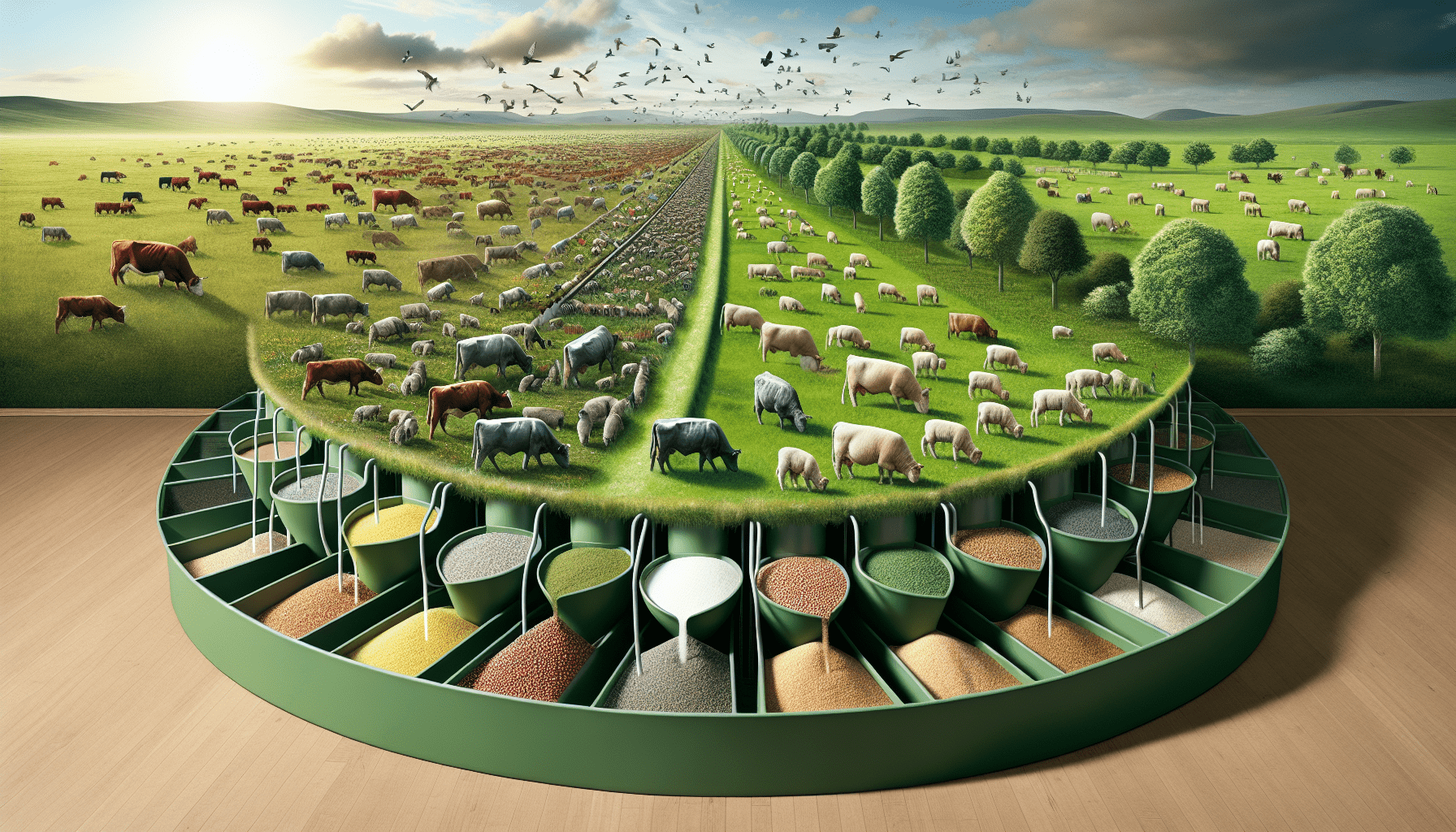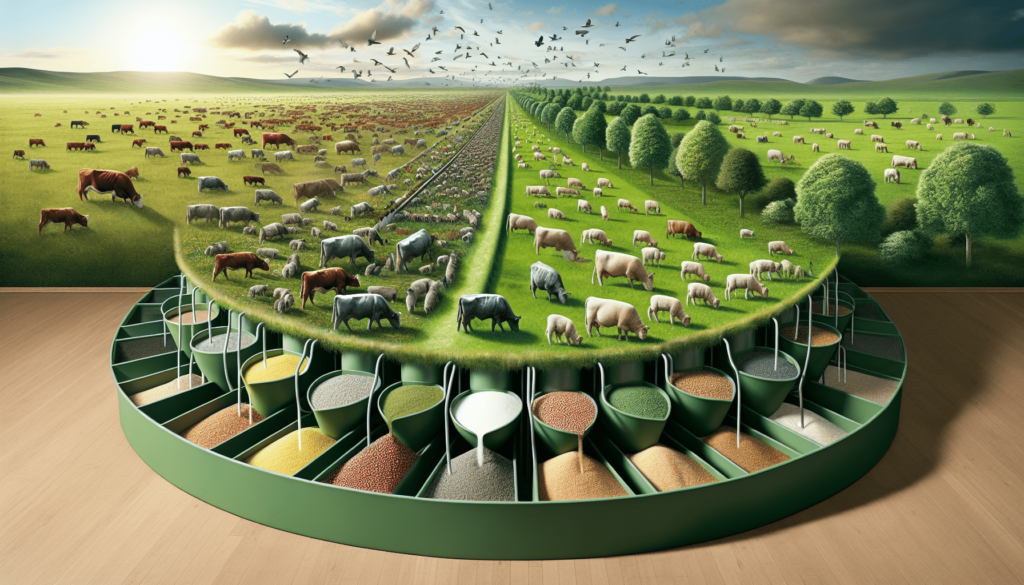
Are you wondering whether you should supplement your animal’s diet or rely solely on natural forage? The topic of balancing natural forage and feeders is a crucial aspect of maintaining the health and well-being of your animals. This article aims to provide you with valuable insights into the factors to consider when deciding whether to supplement or not. By understanding the benefits and challenges of both approaches, you will be able to make informed decisions that support the overall health and vitality of your animals.
Understanding Natural Forage
Definition and importance of natural forage
Natural forage refers to the vegetation that animals consume in their natural habitats. It includes grasses, browse, and other plant materials that provide essential nutrients and energy for animals. Natural forage plays a crucial role in the diet of animals, as it meets their nutritional needs and promotes their overall health and well-being. By consuming natural forage, animals benefit from the diversity of nutrients present in different plant species, which helps maintain their optimal nutrition and supports their immune system.
Types of Natural forage
There are various types of natural forage available to animals, depending on their habitat and feeding preferences. Grasses, such as ryegrass, Bermuda grass, and fescue, are common forms of natural forage for herbivores like cattle and horses. Browse, which includes leaves, twigs, and small branches of plants like shrubs and trees, is commonly consumed by animals like deer and goats. Additionally, legumes like clover and alfalfa serve as valuable sources of natural forage for many animals due to their high protein content and nutritional value.
Considerations in assessing the quality of natural forage
Assessing the quality of natural forage is essential to ensure that animals receive an adequate and balanced diet. Several factors contribute to the quality of natural forage, including its nutrient composition, digestibility, and palatability. Nutrient composition refers to the concentration of essential nutrients like proteins, carbohydrates, fats, vitamins, and minerals in the forage. Digestibility determines how easily animals can break down and absorb the nutrients from the forage.
Palatability, on the other hand, refers to the taste and texture of the forage, which can influence an animal’s willingness to consume it. Other factors, such as the maturity of the plants, soil fertility, and environmental conditions, also affect the quality of natural forage. It is crucial to regularly assess the quality of the forage to ensure that animals are receiving the necessary nutrients for their optimal growth and health.
Impact of seasonal changes on natural forage
Seasonal changes significantly affect the availability and quality of natural forage. During different times of the year, the composition of plant species and their nutritional content may vary. For example, in the spring and early summer, grasses tend to have a higher protein content, making them particularly beneficial for animals’ growth and reproduction. In contrast, during the fall and winter, the nutritional value of natural forage may decrease due to lower protein levels and fewer green and leafy plant options.
Animals must adapt to these seasonal changes in natural forage availability by adjusting their feeding strategies. For instance, supplementing with feeders or providing stored forage can help ensure animals meet their nutritional needs during periods of limited natural forage availability. Understanding the impact of seasonal changes on natural forage is crucial for maintaining the health and productivity of animals in various environments.
The Role of Feeders in Animal Diet
The concept of feeders in animal feeding
Feeders are containers or devices that hold supplemental feed for animals and provide an additional food source alongside natural forage. They are an essential tool in animal feeding programs as they help ensure animals receive a consistent and balanced diet throughout the year. Feeders play a vital role in maximizing the utilization of natural forage, especially during periods of limited availability or when the nutritional content of the forage is suboptimal.
Types of feeders
Various types of feeders exist to cater to the specific needs and feeding behaviors of different animals. Some common examples include trough feeders, automatic feeders, and free-choice feeders. Trough feeders are long containers that allow multiple animals to access the feed simultaneously. They are commonly used for feeding herbivores like cattle, horses, and sheep. Automatic feeders, on the other hand, dispense feed at pre-set intervals or quantities, offering a controlled feeding approach suitable for animals with specific dietary requirements.
Free-choice feeders, such as salt blocks or mineral feeders, allow animals to consume the feed at their own pace. They are often used for supplementing minerals and nutrients that may be lacking in the natural forage. Additionally, some animals, like chickens, may require specific feeders designed to accommodate their unique feeding behaviors, such as hanging feeders or treadle feeders.
Determining the right type of feeder for different animals
Selecting the appropriate type of feeder for different animals depends on various factors, including feeding habits, nutritional needs, and animal density. Herbivores, like cattle and horses, may benefit from trough or automatic feeders, as they can efficiently consume larger quantities of supplemental feed. These feeders also help reduce feed wastage and prevent competitive behavior during feeding.
For animals with more individual dietary requirements, such as chickens, customized feeders that restrict access to unwanted pests or animals may be necessary. Additionally, the feeding behavior and size of the animals should be considered when choosing feeder designs. Animals that exhibit aggressive feeding behaviors, like pigs, may require sturdy and durable feeders to withstand their behavior. Ultimately, the right type of feeder should ensure efficient utilization of supplemental feed while promoting animal health and minimizing wastage.
Implementing a feeder program
Implementing a feeder program involves careful planning and consideration of various factors. It is essential to determine the nutritional requirements of the animals and assess the quality and availability of natural forage throughout the year. Establishing a feeding schedule and monitoring the animals’ response to the feeders can help optimize their nutritional intake and health.
Regular maintenance and cleaning of the feeders are essential to prevent spoilage or the spread of diseases. Additionally, monitoring feed consumption and adjusting the amount of supplemental feed provided based on the animals’ needs can help avoid over-supplementation or undernutrition. A well-executed feeder program contributes to the overall well-being and productivity of animals, supporting their growth, reproduction, and long-term health.

Assessing the Nutritional Needs of Various Animals
Nutritional needs for herbivores
Herbivores have unique nutritional requirements due to their diet primarily consisting of plant material. The essential nutrients for herbivores include carbohydrates for energy, proteins for growth and repair, fats for energy storage, vitamins for metabolic processes, and minerals for maintaining overall health. The composition and quality of the natural forage consumed by herbivores play a critical role in meeting these nutritional needs.
The quality of the forage is determined by factors such as nutrient composition, digestibility, and anti-nutritional factors. High-quality forage that provides sufficient protein and energy is crucial for herbivores’ growth, reproduction, and overall health. However, it is essential to consider that not all forages are created equal. The nutrient composition of the forage can vary depending on factors such as plant species, maturity, and soil fertility.
When assessing the nutritional needs of herbivores, it is important to take into account their individual requirements, including age, health status, and reproductive stage. Young animals, pregnant or lactating animals, and animals recovering from illness or injury may have higher nutritional demands and require additional supplementation to meet their needs. Regular evaluation of the forage and adjusting the diet accordingly can help ensure herbivores receive a well-balanced and nutritionally adequate diet.
Nutritional needs for carnivores
Carnivores, unlike herbivores, have a more specialized diet consisting mainly of animal-based protein sources. Their nutritional needs are centered around obtaining sufficient protein, fats, essential vitamins, and minerals from the meat they consume. While carnivores can derive some nutrients from plant sources, they are primarily designed to efficiently utilize and metabolize animal protein.
For domesticated carnivores such as cats and dogs, providing a balanced diet that meets their specific nutritional requirements is essential for their overall health and longevity. The diet should contain high-quality animal-based protein sources and appropriate levels of fats and micronutrients. Commercial pet foods often contain the necessary balance of nutrients for carnivores, ensuring optimal health and growth.
Considerations based on an animal’s age, health, and reproductive status
When assessing the nutritional needs of animals, it is crucial to consider other factors that may influence their requirements. Age, health status, and reproductive stage are important considerations when determining the optimal diet for animals.
Young animals, such as calves or puppies, have higher energy and nutrient requirements compared to adult animals. They require diets with higher protein levels to support their growth and development. On the other hand, senior animals may have reduced efficiency in digesting and absorbing nutrients, requiring adjusted diets that account for their age-related changes.
Animals recovering from illness or injury may also require special diets that support tissue repair and overall health. Veterinary guidance may be necessary to develop appropriate diets for these animals. Moreover, animals going through reproductive processes, such as pregnancy or lactation, have increased nutrient needs to support the growth and development of their offspring. Proper nutrition during these stages is essential to ensure healthy offspring and the overall well-being of the mother.



